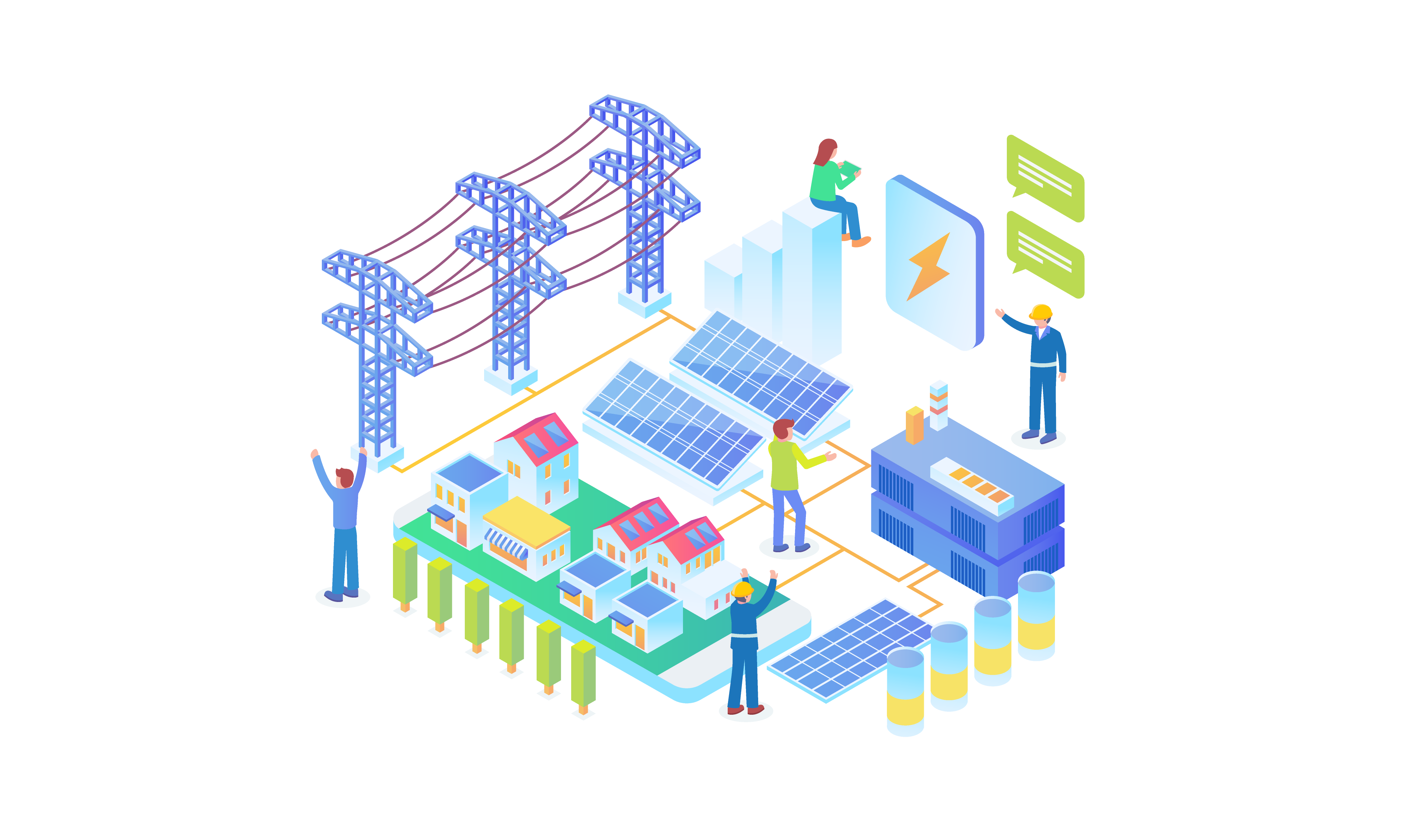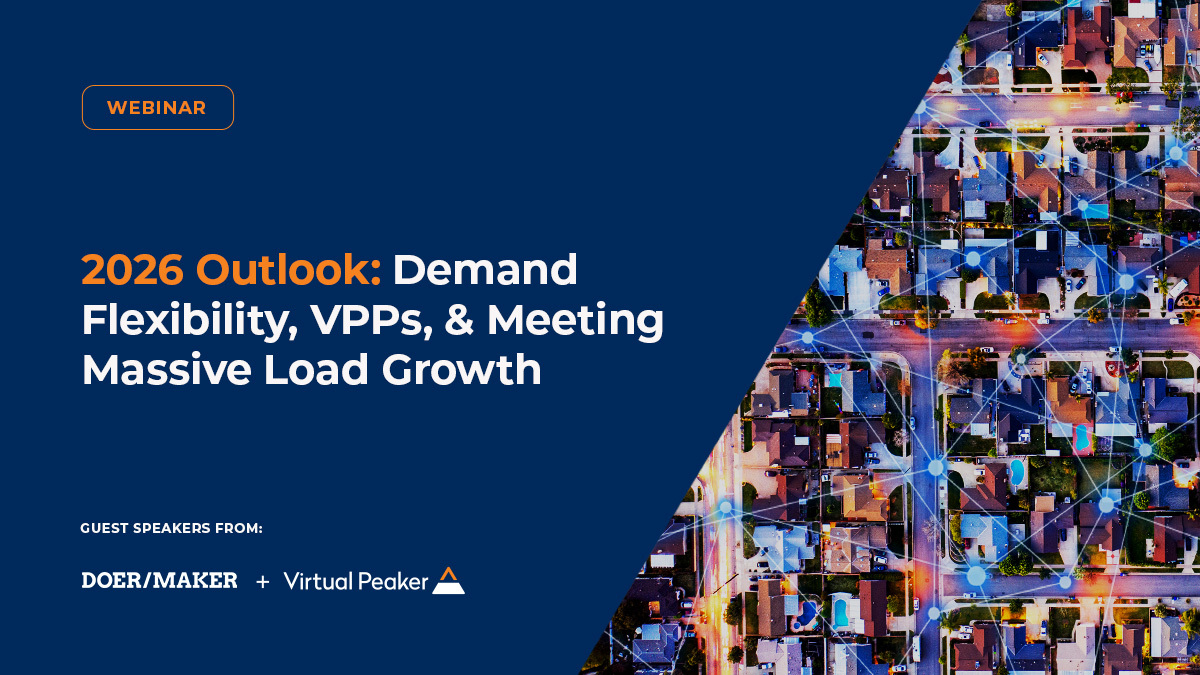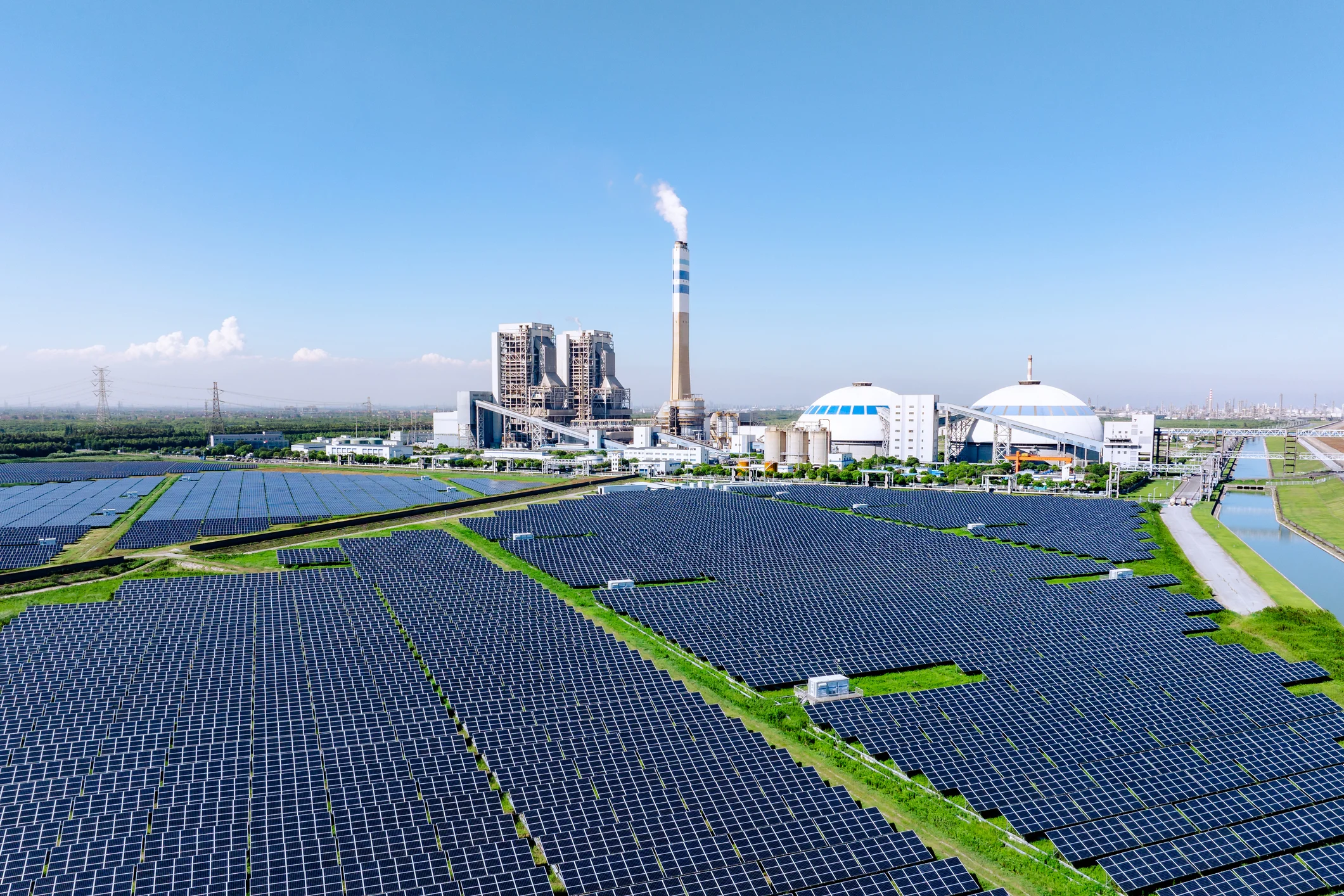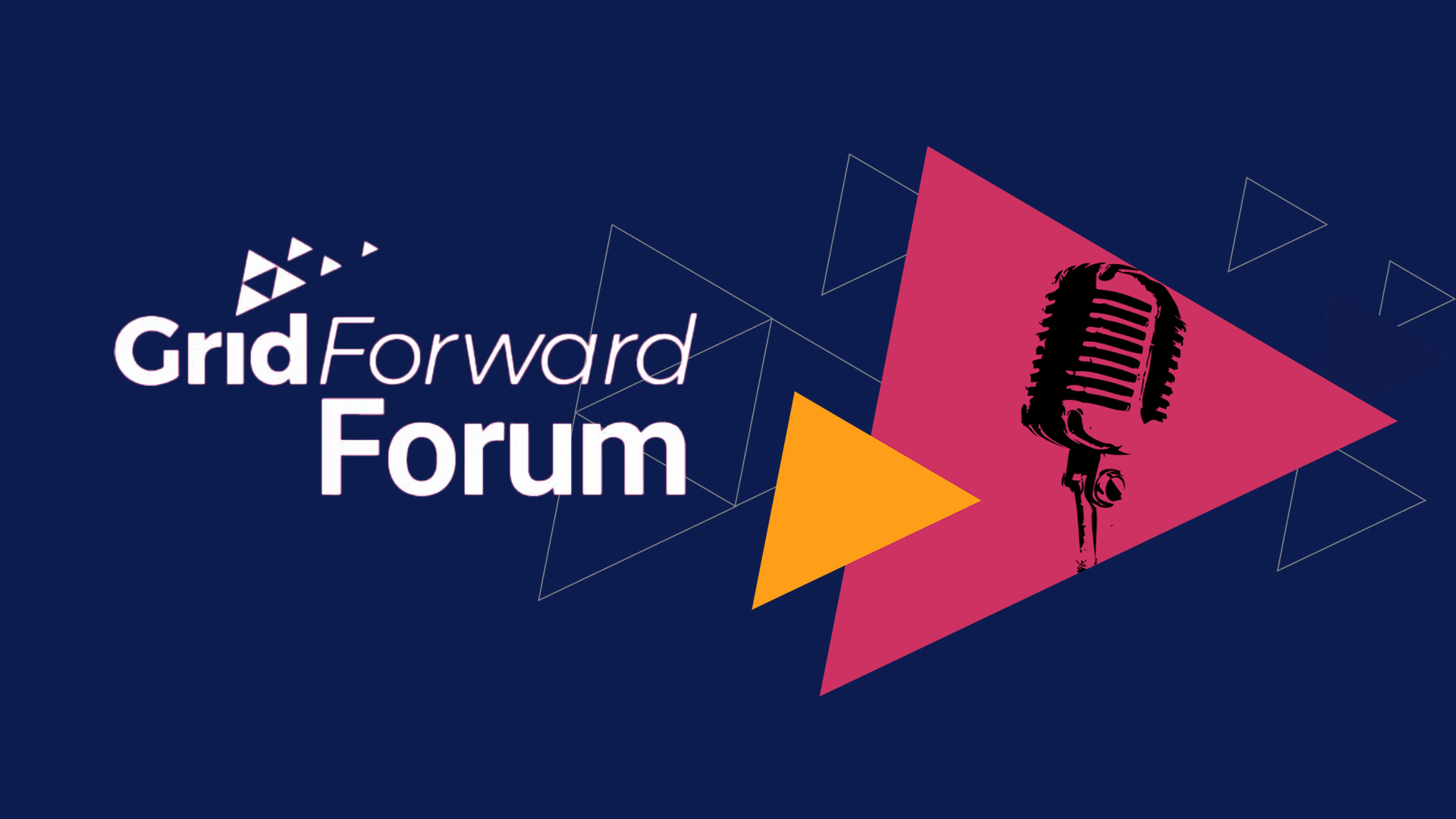Since the first electric power grid, system operators have dreamed of leveraging the flexibility of the energy consumers connected to the grid to make the system run more efficiently. However, they have done so in a manner that impacts device owners at the worst possible time, such as peak load-shaving efforts of the 70s when utilities turned off air conditioning units during the hottest hours of the year. Distributed energy resources (DERs) have the flexibility and capability to make that dream a reality, and utilities are trying to use them in ways that minimally impact the owners of the devices, maintaining utilities’ fragile relationships with their customers. Virtual power plants (VPPs) can do this.
The Grid’s a-Changin’
A spicy topic for us energy nerds is the evolution of power system operation, and for the non-nerds, just know that things are changing rapidly (for power systems). Increasingly, extreme weather conditions and weather events are causing grid instability, forcing the system to bump up against its limitations to meet a growing and complex electricity demand. The electrification of devices like electric vehicles and water heaters is taxing the grid like never before by increasing the amount of energy that needs to be supplied to endpoints in the system. Fortunately, these same DERs provide opportunities for enterprising utility operations to utilize excess, community-produced renewable energy, which can combine with other smart devices to create a VPP.
While renewable energy penetration through things like rooftop solar is increasing, these technologies complicate power grid operation due to their intermittency and variability. Furthermore, more generation from renewables and other green sources is needed as coal power is scrutinized. And while all of this creates new challenges within the power system, it also creates opportunities, including VPPs.
With public interest and the increased adoption of DERs, the modern grid is increasingly complex and sophisticated, challenging utilities to meet a rising need. These DERs include smart appliances (e.g., water heaters and HVAC units), electric vehicles and their chargers, energy storage systems (think batteries), rooftop solar with smart inverters, and so on. Since DERs are often WiFi-enabled, allowing utility program managers to adjust aspects of ratepayers’ power consumption in ways that traditional devices can not.
What the Funk is a VPP?
I’m not going to reinvent the wheel here, so I’ll let the Department of Energy (DOE) define a VPP. According to this DOE, a VPP is the following:
“A VPP is generally considered a connected aggregation of DER technologies – not only solar and battery storage, but increasingly grid-interactive efficient appliances and buildings, electric vehicle charging, and thermal energy storage. Aggregators, utilities, or grid operators, under terms agreed upon with participants, can remotely and automatically adjust DERs in this aggregation to provide clean energy, reliability, and grid services while maintaining customer comfort and productivity.”
The key ideas of the above VPP description are that the VPP consists of a set of DERs, that these DERs are interconnected and aggregated, and that the VPP coordinates these DERs to benefit the grid. The grid benefits need to be balanced with the impact on the actual owner of the devices and their main purpose. One thing missing from this definition is that a VPP also generally has a higher-level decision maker that is typically software and that computes the adjustments needed by the DERs; exceptions exist, but we’ll ignore them here for simplicity. I’ll dig into this definition below.
Heard it Through the Grapevine
Let’s talk about grapes and virtual power plants. A bunch of grapes consists of some number of individual grapes and a stem, much like a virtual power plant consists of many individual DERs and a decision maker. All of the grapes are connected physically to each other and the main stem, while the DERs within a VPP and the decision maker are connected virtually via the internet.
This virtual connection allows them to pass information back and forth between other DERs or between the higher-level decision maker. Utilizing a distributed energy resource management system, DERs are aggregated to form a virtual power plant and are coordinated and adjusted by high-level decision-makers (algorithms)—much like you move a bunch of grapes using the stem, not individually—to achieve some top-level objective. Think about this from the perspective that when you buy grapes you likely don’t care about their individual weight, just the weight of the bunch.
Ultimately, while DERs are designed for the end-user, they still represent deployable assets that can benefit the larger power grid, and that usage needs to be balanced as a grid asset with their designed purpose. For example, consider batteries supplying backup power for your house. The utility might like to use all of the energy in the battery (and every other battery) to help prevent a blackout, but even with interventions, there is still no way to entirely guarantee continuity of service. In that example, battery owners are left with no backup of their own, which does not result in happy customers. Fortunately, a good virtual power plant doesn’t do that sort of thing; it balances both the grid and homeowner needs.
Cool… But What Can VPPs Actually Do?
As mentioned, DERs are becoming more common, and increasingly sophisticated. This means that there is a greater pool of these resources to aggregate with top-line parameters that can have a greater impact on the power grid, and they can address new (to them) power system needs. Below let’s discuss what a VPP means today, and where they’re heading in the future.
Current VPP Capabilities
Today, a virtual power plant generally consists of an aggregation of the same type of DER that provides a single service to the power grid over a defined, discrete time. So what does that mean?
First, an aggregation of the same type of DER means that in general, a virtual power plant will contain all batteries, all smart thermostats, etc. The VPP provides a single service in that it’s usually used exclusively for peak shaving (reducing the peak demand during periods of high demand) or for reserves (being available during emergency periods), but rarely for reserves and peak shaving simultaneously.
Currently, virtual power plant functionality generally consists of active power adjustments from timescales of minutes to hours (think adjusting their energy consumption on 15-minute intervals for up to a few hours). I’m not going to use any specific terminology for those changes on various timescales, because they vary widely across service territories and markets. Still, these services are provided over a defined, specified period, meaning that a utility will designate an event period where they can control the devices. For example, a utility will discharge a battery during a few multi-hour periods of the year when the load is particularly high, but it won’t continually adjust the battery charge or discharge rate over the entire year.
Finally, these adjustments to the DERs might only happen once every few minutes to maintain the top-line parameter that they are trying to control. DERs may be able to respond very quickly, but oftentimes it is impractical to modify their behavior more than this.
By contrast, physical power plants help balance the supply and demand of active power on timescales from under a second to days, weeks, or years. This means that their active power injections can be used for everything from frequency regulation to energy, reserve, and capacity requirements. They also inject reactive power into the grid, which helps the system maintain appropriate voltages to prevent system collapses and ensure adequate power quality. They are highly controllable and reliable, and so their parameters are considered in system planning over long timeframes, such as for capacity planning years in advance. However, conventional physical plants are a challenge to carbon emissions, and virtual power plants are evolving quickly to cover the gap.
Future VPP Capabilities
While the internal technical aspects of virtual power plants (i.e. hardware and software) evolves, trust in the technology continues to build. For example, smart inverters for batteries or solar installations are an existing but relatively undeployed technology. These smart inverters can adjust their reactive power injections (or absorptions) at sub-second intervals, and —once deployed at scale—can create virtual inertia at sub-second timescales, where the physics of traditional generators help balance the supply and demand of active power. Likewise, these same inverters can also influence the reactive power balance locally within the grid to help ensure appropriate voltage levels.
As sensing, communication, and computation capabilities improve, it allows the necessary information to be passed from devices to decision-makers and back, allowing VPPs to operate on faster timescales. Along with this, the added information enables advanced algorithms to be developed.
All of this makes it easier for VPPs to operate continuously, rather than at discrete times, on more complex sets of devices, rather than on sets of identical devices, and with more complex goals which might only address a single need. Furthermore, this functionality can be done while ensuring that DERs operate in a way that minimally impacts the end users or the main purpose of the devices. The main sticking points for much of this capability are increasingly becoming rules and regulations, rather than technical barriers.
Trust in Virtual Power Plants
Another aspect of this evolution is that utilities are beginning to trust virtual power plants in both operation and in planning. Utilities continue to gain more experience with virtual power plants and their growing capabilities. Right now, analyses are being developed to address the uncertainty around DERs and allow them to be viewed as a more dependable, static resource. The next step is to develop that trust in virtual power plants in system operation rooms.
Snap! So, Why Aren’t These Everywhere?
Virtual power plant adoption has been limited by the overall adoption of devices that enable them, the need to educate the device owners, uncertainty by the utilities of their capabilities, and by the fact that they’re just really complicated to get right. Batteries, smart thermostats, smart water heaters, solar panels, and electric vehicles are the DERs that someone would typically think to include in a virtual power plant. The common theme across all of those devices is that they are, for now, luxuries. Programs or incentives that make these devices more accessible to a wider group of people across income levels are imperative to increase deployment.
VPP University
End-user education and communication is another major factor limiting the adoption of VPPs. This became evident during heat waves in Texas recently, when customers were unaware or forgot that they were enrolled in a thermostat program, and became upset when their thermostat setpoints were changed to protect the grid. For utility program managers, it’s crucial to prompt the people that buy devices and enroll in programs prior to an event, allowing them time to properly opt-in or out to avoid upsetting your customer base. In addition, being clear about the extent that you can manipulate the devices and common scenarios where that can occur are key. The general goal of virtual power plants is to be non-disruptive, meaning that end-users don’t even notice minute changes.
Keeping Up With The Kardashians (By Which We Mean VPPs)
Utilities are also still getting used to VPP capabilities, how to leverage them, and how to integrate them into normal power system operations. Unlike a physical power plant, virtual power plants have some significant randomness associated with them, because end-user behavior is impossible to predict perfectly. This means that utilities often don’t know exactly what they’ll get from DERs. In addition, cybersecurity is a growing concern as the total (or aggregate) power of devices under control increases. Virtual power plant providers need to think of how to package or describe resource availability in a way that alleviates these concerns, and ensure that cybersecurity risks are at the top of their mind.
VPPs Are Tricky
Finally, VPPs are complicated algorithms that need to be packaged into an intuitive system for utility personnel to use. Virtual power plants draw on technical areas like data engineering, data science, control systems, optimization, and signal processing. There is a ton of smarts behind a VPP, and as sensing, communication, and computing capabilities advance in DERs, it unlocks new capabilities for a VPP. As a result VPPs are constantly evolving.
Virtual Power Plant Conclusion
Despite all of this, virtual power plants are steadily advancing in their capabilities, and are a key to unlocking the full potential of DERs. With more DER and EV adoptions than ever, and with the distributed energy resource management system (DERMS) market blossoming because of legislation like the Inflation Reduction Act, utilities are poised to take advantage of this promising technology to minimize carbon emissions, enhance grid resiliency, and lower energy costs. So what are you waiting for?







